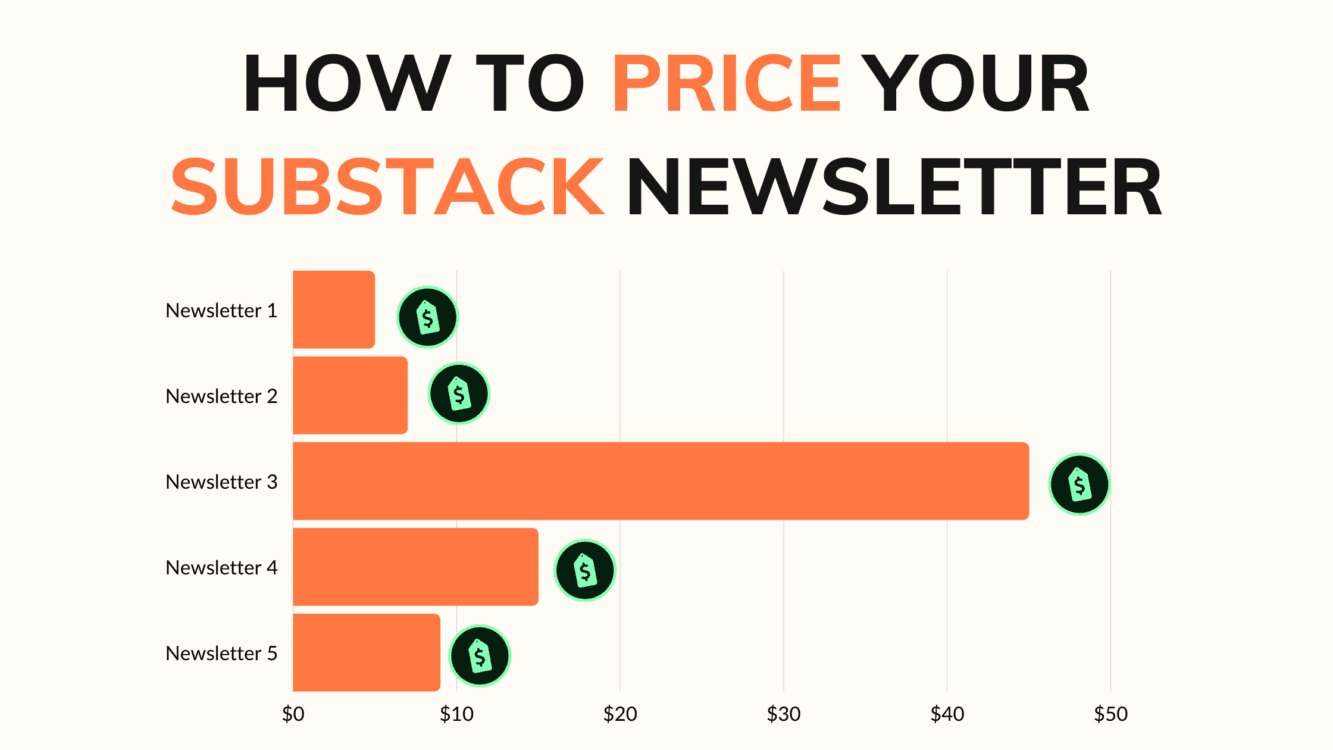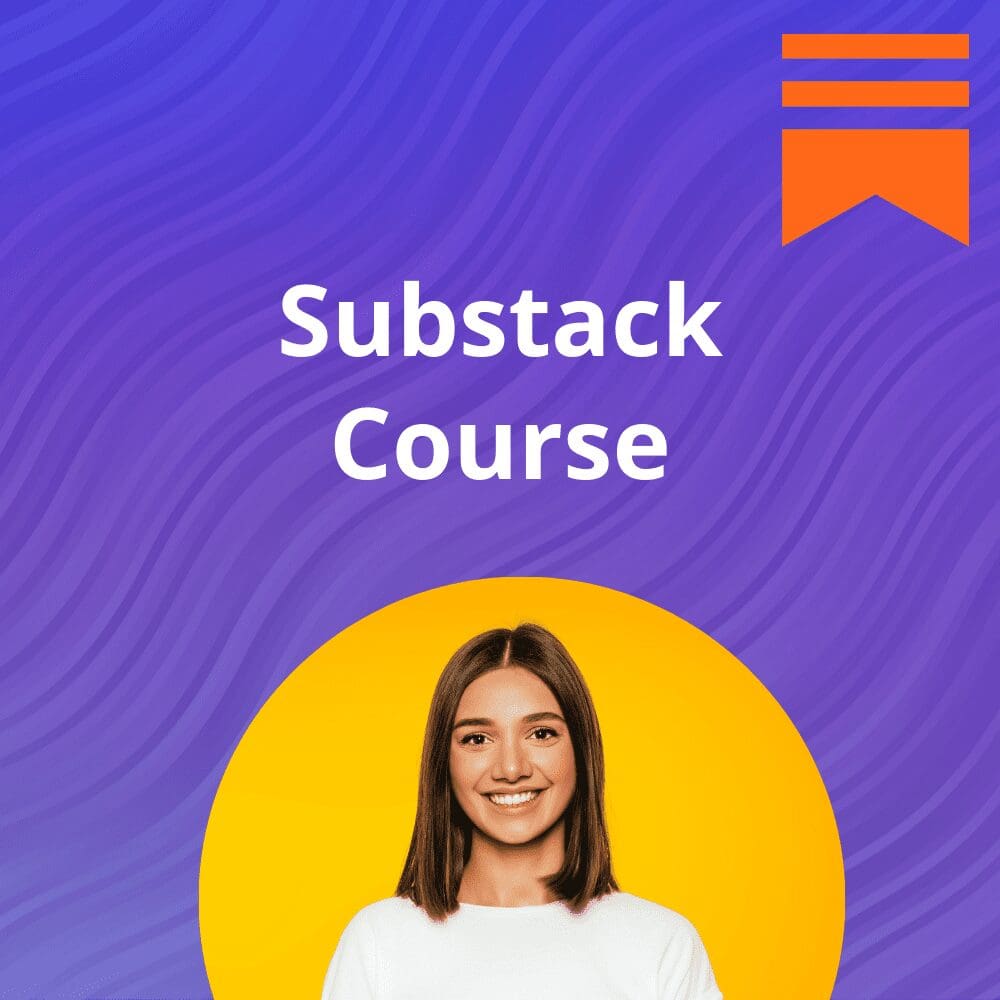Disclosure: Some of the links below are affiliate links, meaning that at no additional cost to you, I will receive a commission if you click through and make a purchase. Read our full affiliate disclosure here.
When I was building my first Substack newsletter, there were no third party resources available for newsletter creators. Getting my first 250 paid subscribers was hard! That's why I created the first Substack Course.
CASEY BOTTICELLO
Founder, Blogging Guide
Creating a newsletter with Substack is a pretty straightforward process. However, the one question that most first time paid newsletter creators are left wondering is:
How much should I charge for my Substack newsletter?
This is a good question. After all, price your newsletter to high, and you may miss out on viewers. Price it too low and you may end up earning less money than you would for the same amount of work.
Luckily, now that Substack has been around a few years, there are a lot more subscription newsletters to look to as examples and data to help you pick the right price for your Substack newsletter.
General Substack Newsletter Pricing Range
Most newsletters on Substack fall into a fairly narrow price range of $5-$15 per month. Substack does not allow you to charge less, so the $5 price point represents the lowest pricing possible (you can effectively offer your newsletter at a price below $5 by creating a discount, but as far as base price goes, $5 is the minimum).
You can charge more than $15 per month, but you will need to typically be a true subject matter expert, who is offering indispensable advice to an affluent group of readers. A prime example of this is Petition, which is currently $49 per month (or $500 per year).

Factoring in Substack’s Fees
The fees that Substack charges its newsletter creators, are another factor that should be factored in when determining the price of your newsletter.
Substack collects 10% of all revenue generated by your newsletter. Additionally, Stripe, the payment processor Substack uses, charges 2.9% + $.30 per transaction fee.
So what does this actually look like, in practice?
Using my own newsletter as an example, a $50 payment, from a reader, for an annual subscription to Blogging Guide, nets me $42.75 (14.5% taken in total fees).
This might not seem like a lot, but if you are going to try to grow a large Substack audience, this amount can become a meaningful difference.
So it is important that you pick a newsletter subscription price, that will meet your needs net of the fees from Substack and Stripe.
Obviously, one solution is to raise the price of your newsletter, but depending on who your audience is, a small raise in price can trigger subscription cancellations.
It’s also worth noting that newsletter prices are not static, meaning, you can change them over time. So if you are stuck deciding between two prices, choose the more affordable option and revisit the issue after you actually have some paid subscribers.


Offering Promotional Pricing to Early Supporters
One of the most effective Substack newsletter pricing strategies I’ve used, is offering your early subscribers a significant discount.
This can be accomplished through lowering the price for all of your potential newsletter subscribers. But it also can be accomplished through:
- Offering limited time discounts. Substack allows you to offer potential subscribers discounts that expire on a certain date. In this scenario, you would typically notify your email list of the limited-time pricing so that the people who supported you from the beginning, can take advantage of this discount. However, other people following you, who may be intrigued can also sign up within the pre-determined time period of the sale, allowing you to test the general demand for your newsletter.
- Creating a discount accessible via a specific link. Substack allows you to create a discount that is only accessible through a custom link. And you can create multiple custom links. This allows you to offer early subscribers deeper discounts than you may want to offer to new readers who are just learning about your newsletter. It can also be a good way of offering a promotion to a targeted group of people. For example, if you are on podcast, and are promoting your newsletter, you could offer an exclusive discount for the podcast listeners.
- Substack allows you to offer group discounts or discounts that are only applicable to specific email addresses. This could limit a discount to students (people with valid .edu email address). More recently, Substack has allowed you to offer discounts to custom email addresses. So, you could offer promotions to people who have the same root email address. For example, you could offer all of the people with email addresses from a specific company or organization a discount (i.e. users from eBay who have an “@ebay.com” email address or users from the American Red Cross who have an “@redcrosstraining.org” email address).



Monthly vs. Annual Pricing
The optimal price of your newsletter depends on a number of factors, including the length of the subscription.
Substack currently allows for two main types of paid subscriptions: monthly or annual.
Annual subscriptions are typically offered at a 10%-20% discount off the equivalent monthly pricing.
The more established your newsletter, the less this discount matters. Conversely, if you have a relatively new newsletter, I would highly suggest offering, at least initially, a 20%+ discount on annual subscriptions, for the following reasons:
- Annual subscriptions allow for better revenue projections. If you have a lot of monthly subscribers, revenue will inevitably fluctuate since monthly subscribers have a higher churn rate. Additionally, as you change your newsletter subscription price over time, or offer promotional deals, these variations will be reflected more in monthly subscriptions than in annual subscriptions.
- Annual subscriptions help weed out “problematic subscribers.” Based on my experience, most of the customer service issues come from a small group of monthly subscribers.
- It is far easier to meet (and exceed) expectations of annual subscribers. Content production varies month to month. So if you have an annual subscription, you will see a better sample of the content that you can come to expect. Monthly subscribers might sign up in a month where you happen to produce less content. This may lead to them not upgrading to an annual membership or cancelling their monthly membership.
- Annual subscriptions decrease the risk of payment failure. A small amount of subscriptions through Substack will fail because of outdated payment information. For monthly subscriptions, there is a greater risk of payment failure, since their are 12 cycles in a year, and only 1 cycle for the annual subscription.
In the case of Blogging Guide, my current pricing offers subscribers a ~42% discount on annual pricing, which is generally one of the larger discounts I have seen on Substack.


Conclusion
Ultimately, Substack newsletter pricing depends on a number of factors. Some of these include pricing your newsletter competitively relative to other Substack newsletters, accounting for the fees Substack takes, whether you have an existing audience and want to offer them promotional discounts, and your desire to alter monthly vs annual pricing.
Even with all these factors, it is important to remember that at end of the day, you should feel good about the price you are charging for your newsletter and your price should reflect the level of income or extent of immediate need, from your audience. If you audience is comprised of high earning tech executives, who are looking for make-or-break industry insights, chances are you can price your newsletter on the higher end. If your audience consists of individual who are looking for penny pinching tips, you may need to keep your pricing on the lower end.
However, even if your audience has little disposable income, you can always justify a higher price if you add concrete value to people’s lives. In the example of an audience of penny-pinchers, if you can show them how to save thousands of dollars each year, your relatively high priced newsletter (say, $20 per month) may be worth it.
So while newsletter pricing is important, don’t let this stop you from producing content. You can update your Substack subscription prices at any time. The focus should still be creating the most valuable content for your audience.
If you want to learn more about Substack, check out our Substack guide, or enroll in our Substack course!





